Though California is a large state, the effect is always widespread when these happen, and these happen a lot. (1) Even 100 miles away the haze is noticeable, and for anyone with respiratory issues, changes in the air are a health concern. There is no question about that, smoke and smog were listed as carcinogens before the International Agency for Research on Cancer even existed, and rightly so.
With real health concerns well-known, why hype the potential impact so much that parents demand schools take action and close?
Yet that is what happened. On the evening news Monday, meteorologist Mark Finan of of KCRA television put up a rather scary looking air quality map and said conditions were unsafe, not just for asthmatics or people with other respiratory issues, but for everyone. It was very earnest, and it looked terrifying, but it was wrong. Yet by yesterday the concern level had ramped up so much, even though the air was better, that schools were declared closed.
There is no reason for healthy Sacramento residents to be wearing face masks, though I am sure medical supply stores appreciate the media-induced surge in sales. However, there is a science lesson in all this. Including what is not science, like color maps showing blood red levels of Particulate Matter2.5 and saying that is placing all of us in harm's way..
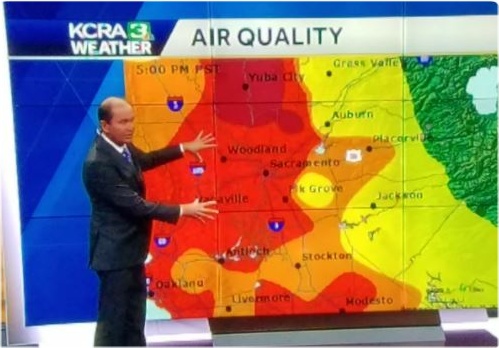
Look scary? It would be, if this were a real suspended air particle hazard, but it is instead PM2.5.
Smog is a carcinogen, as is smoke - but we don't have a particulate matter concern in America unless there is a wildfire
In 1952, over 10,000 dead people in the London Smog made "pollution" a part of the lexicon. Immediately governments in developed nations began to tackle the problem by increasing regulations on particulate matter in the air that was scientifically established as harmful, including the U.S. in 1966.
The actual air hazard known to cause harm is particulate matter 10 micrometers in diameter, called PM10. That is about a tenth of a human hair. Inhaling it chronically is bad but any American who travels from our clean air to Beijing, where PM10 levels are high, know it is stressful.
But that does not mean smelling smoke is harming you. And that is the key difference between PM10 and what Mr. Finan showed, PM2.5. PM10 is a proven hazard shown by science, PM2.5 was simply declared a potential hazard based on statistical correlation and an appeal to the Precautionary Principle. We don't set the speed limit at 5 MPH for cars because no lives can ever be lost, we don't stop selling bacon because too much of it might cause cancer, and we aren't saving anyone healthy from harm by closing schools based on a color plot of a tiny particle size that has never killed anyone.
On Twitter, I noted for Mr. Finan that by showing PM2.5 and not 10 he was using a map that was not telling an accurate risk story and he politely replied:
Well, let's disregard California government science claims. California has so many spurious health weirdness you can't walk into a Walmart without getting a cancer warning at the front door.Hank- This is PM 2.5, not PM 10. The air is considered unhealthy by the Air Quality Management District and the EPA. https://t.co/23Dyc8TY2X
— Mark Finan (@kcraFinan) November 14, 2018
What about EPA? They made waves when they said they were going to eliminate 'secret science' and 'sue-and-settle agreements.' (2) Dissent was along the usual political lines but the new administration's EPA had a point. Neither Waters of the United States nor the Clean Power Plan nor new regulations on small micron particulate matter had a basis in science that anyone outside a hand-picked few behind closed doors talked about. And yet now PM2.5 maps are being shown on TV as blood red hazard warnings and getting schools closed and forcing parents who can't afford daycare to miss work.
During the Obama administration, in the quest to improve what is already the developed world's best air quality, the EPA set about 'defining air deviancy down.' While things looked great when it came to PM10, (3) Dockery et al. (1993) instead claimed PM2.5 was the toxic component in air that needed to be tackled so his EPA began to tout a need for regulations on it even though they never saw the data and the Harvard T.H. Chan School of Public Health has refused to provide it for 25 years.
That's not evidence-based. It's not how science is done. And yet EPA's Gina McCarthy claimed before Congress that 160,000 Americans were dying each year due to PM2.5.
It was simply untrue and Dr. Stan Young and others have shown it. Using the largest dataset ever, Dr. Young found no increased mortality due to PM2.5, not during the entire history of EPA - including during a similar surge of wildfires in California which caused PM2.5 to rise significantly.
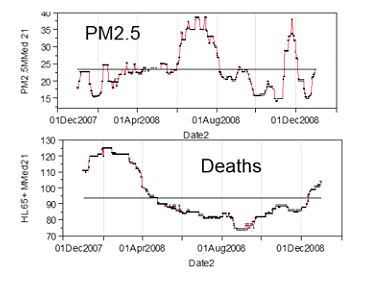
California deaths and PM2.5. Credit: Dr. Stan Young
Color plots can do anything. If I use a narrow temperature range, let's say 68-70 degrees Fahrenheit, and create color plots of the gradients, 70 degrees will look like a deadly heatwave. That is what was happening when using a plot of PM2.5. Actual dangerous smoke, PM10, from the Paradise fire is a worry for people with respiratory issues. By using PM2.5 they were instead able to splash red all over the map - the particles are one quarter the size - but it isn't a meaningful health issue.
Here is a screenshot taken with my phone camera just now, outside the window of my office.
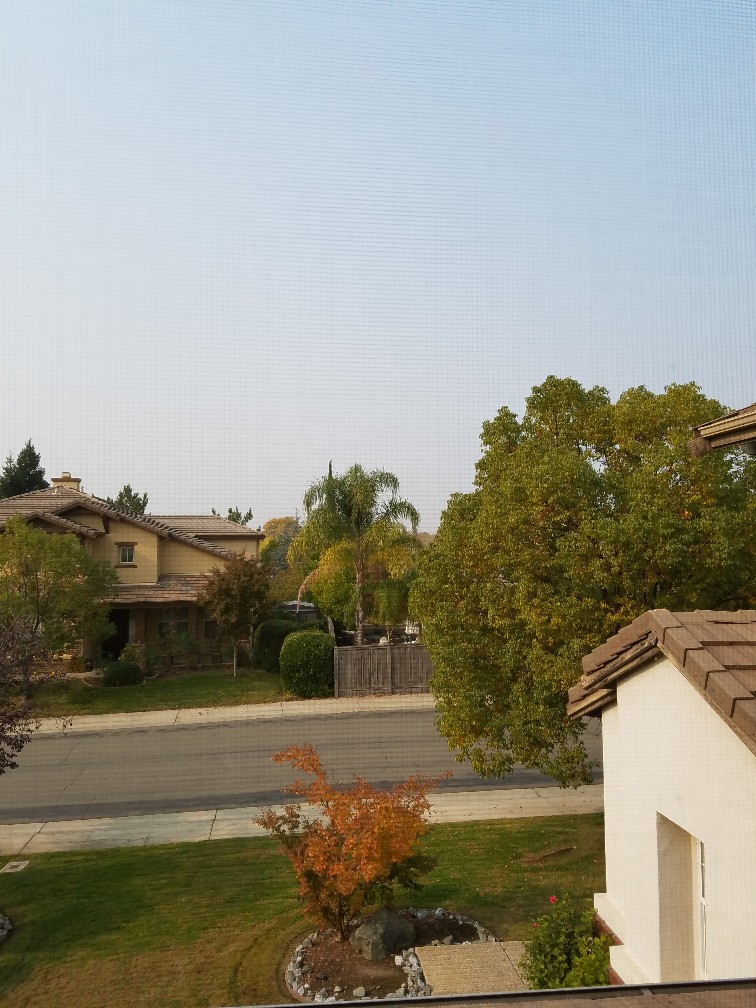
There is a little bit of haze, though that is mostly the screen in the window. It is a little different than an ordinary day, but not awful for November.
Yet it is not harming healthy people. Since EPA's AirNow site is perpetually down I used the Air Quality Index site instead.
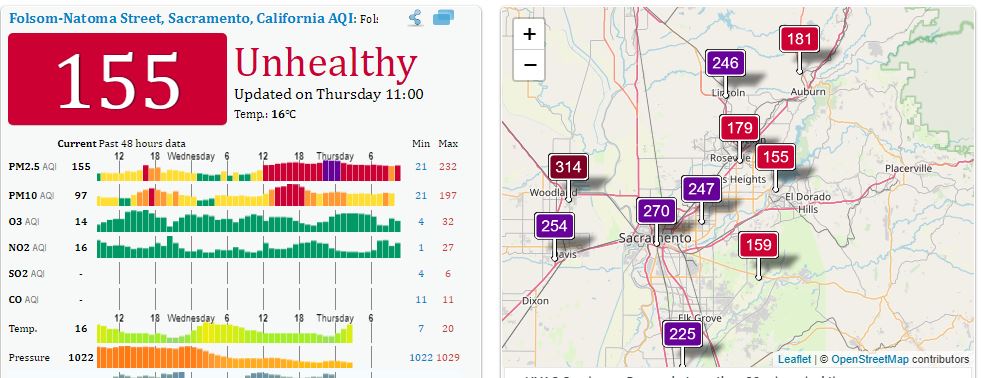
For PM10 it shows unhealthy for people with respiratory issues. But if you instead look at PM2.5 (you may need to click on the image) it shows unhealthy for everyone. It's the exact same air. If media had chosen to use PM1 the entire state would be blood red.
Mr. Finan would have been correct to issue a caution for people with breathing issues, but by using PM2.5 instead of the known air hazard, local news has sent people into a panic despite the fire being 100 miles away.
Kids are thrilled at their free day off, what about parents who both work that were notified at 7 PM last night? What about poor people who don't have easy access to daycare? The economic impact of these decisions is substantial, yet the school invoked 'it's for the children' reasoning, which no one wants to argue lest they be vilified. (4)
How are people affected by the fire supposed to react when someone 100 miles away says 'me too' about their impact because a school was closed due to what looks like a cloudy day?
NOTES:
(1) Though it is the American home of agriculture, California is mostly a desert, it is water simply water infrastructure, bring it in from as far away as Colorado, that keeps us going. Since there is little rain places without water sprinklers, like forests, go up in flames frequently. When I moved to California in 1999 I asked about a fire east of Los Angeles and a friend quipped, 'don't worry, we have two seasons in California, so the mudslides will put it out.'
(2) The second is easy to comprehend; ever since 1984, when the Supreme Court declared that regulatory bodies could enact rules based on their findings they have become an extension of the White House - a President can go around Congress and make a new regulation when a law can't be passed. At that point it became routine for EPA political appointees who wanted to advance their agenda to get a friendly group to sue them, then they would settle out of court giving the plaintiff what EPA wanted all along, with taxpayers footing the bill for court costs. That allowed EPA to say it wasn't their doing.
(3) Even using PM2.5 America has tremendous air quality, so great it's time to stop talking about pollution as a crisis. And when it comes to the real hazard, PM10, we are grreen across the board.
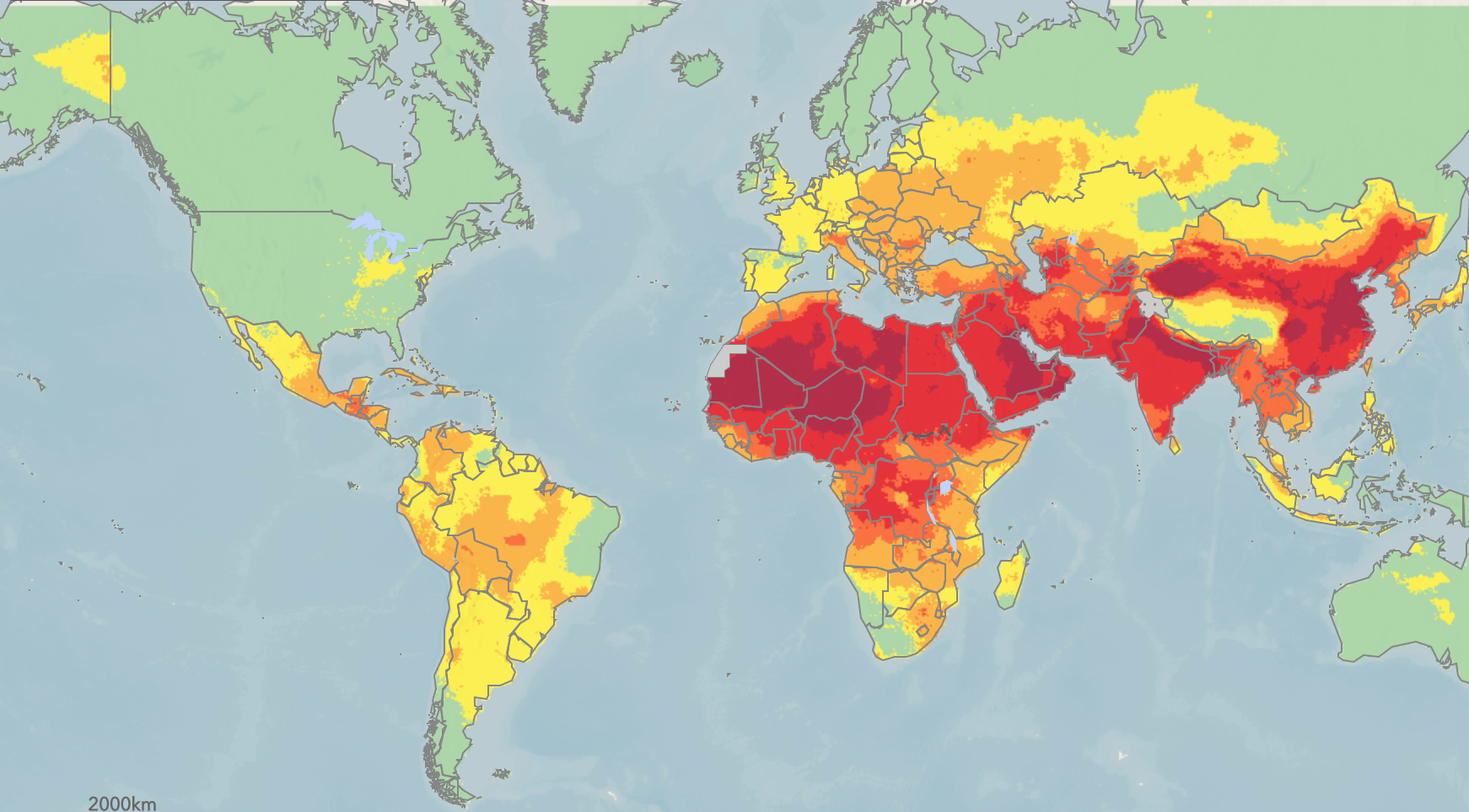
Source: WHO
(4) And on Twitter, I was vilified, An AP journalist said she would trust Finan over "some guy" named Hank, which tells you everything you need to know about science at Associated Press. If he is on TV, he is a de facto expert to a journalist. If I cite actual experts and data, I am just some guy.





Comments